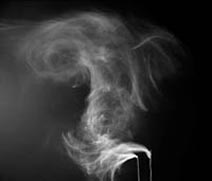Achieving the Blackest Black

The blackest black in print is achieved with today’s inkjet materials. Epson Exhibition Fiber printed on Ultrachrome K3 or UltraChrome HDR produces a 2.65 dmax; silver gelatin selenium toned produces a 2.35 dmax. You get this extraordinary black when printing through the printer driver’s Advanced Black & White mode; print the same image through a standard color color management route and you’ll only get a 2.4 dmax. Also, matte papers yield weaker blacks, roughly 1.85 dmax.
Get my free download on Epson’s Advanced Black & White mode here.
Find out more about black and white in my DVD Black & White Mastery.
Find out more about black and white in my Workshop Black & White Mastery.
Special discounts are available until January.


garreyf
27.12.2008 at 12:54Excellent info John.
As photographers we need to see this hard data to decide on the proper printing workflow. That is interesting to see how the dMAX is better using Epsons Advanced black and white mode. Great stuff. Thanks.
Is this your preferred workflow? ie the advanced black and white driver?
Correct me if I am wrong. But, one cant use custom black and white paper profiles when using the ABW driver. Do you make your own profiles? or do you rely on Epsons paper profiles? Thanks.
johnpaulcaponigro
28.12.2008 at 16:24I use the Advanced Black and White mode for uniform toning solutions.
For cross and selective toning add hue to images in Photoshop and print as a color image.
I print on Epson papers.
I use Epson profiles 7 times out of 10.
In some cases I still use my own custom profiles.
garreyf
29.12.2008 at 10:05Thanks!
garreyf
06.01.2009 at 20:19I was recently contacted by a local professional photographer/printer who advocates printing our digital black and whites with a special printer using laser technology and wet chemicals.
Here is a link to a pdf article he wrote: feel free to delete the link.
I was wondering if you could make a comment on this technology. Is this really better than what we can get with our inkjet printers today?
Thanks!
Garrey